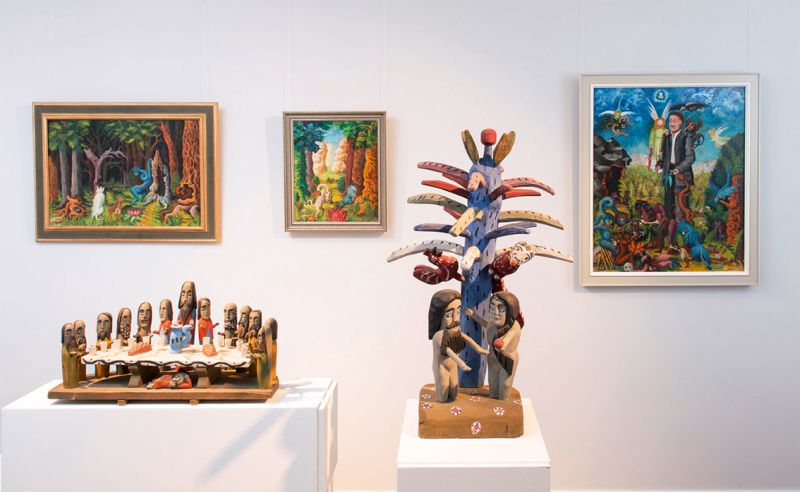Frömmigkeit und Nachtgesichte. Naive Kunst aus Polen im Spiegel der Moderne
Mediathek Sorted
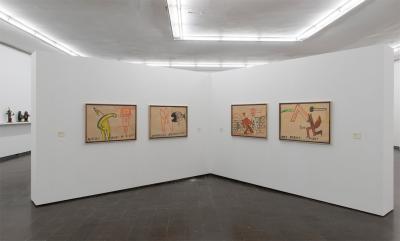
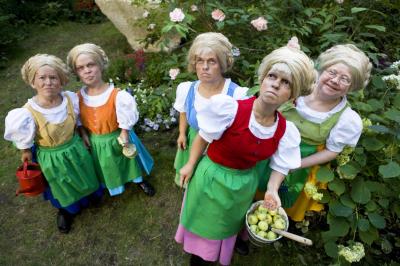
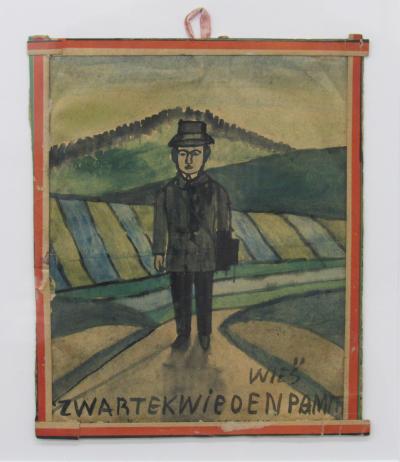
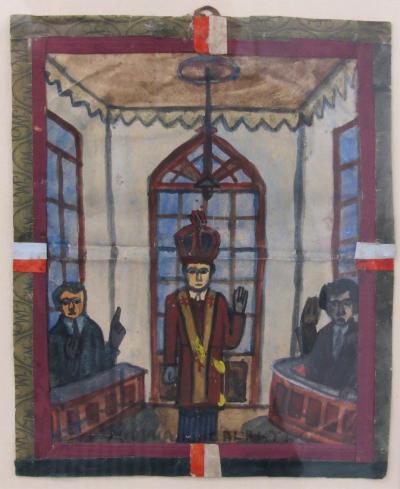

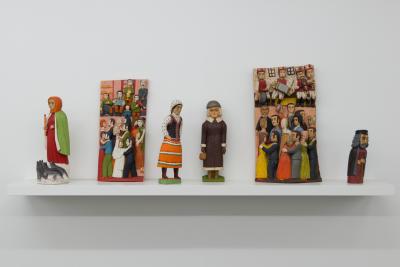

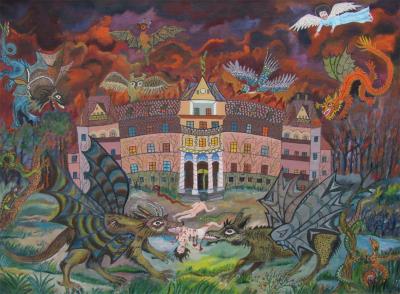
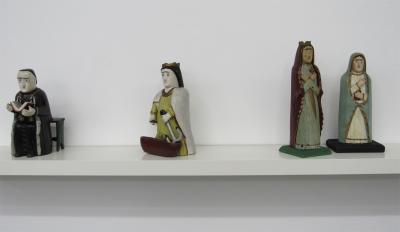
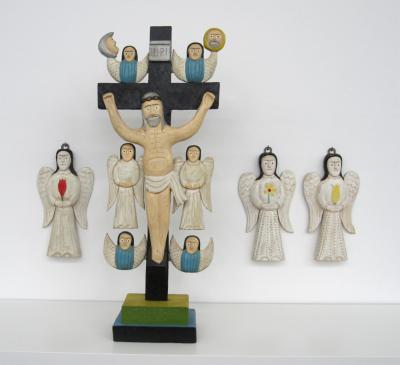
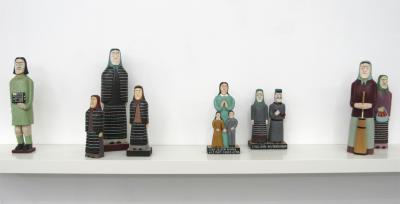
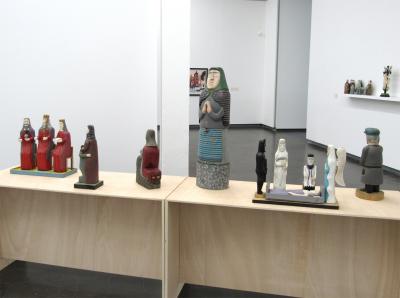
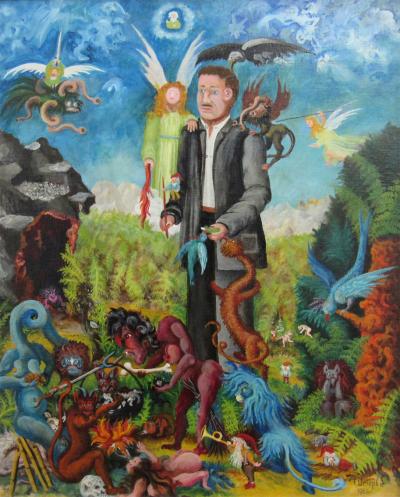
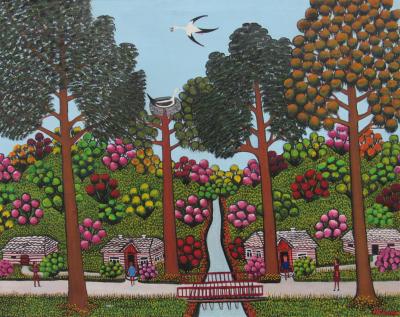
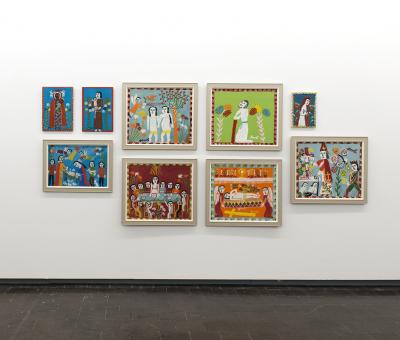
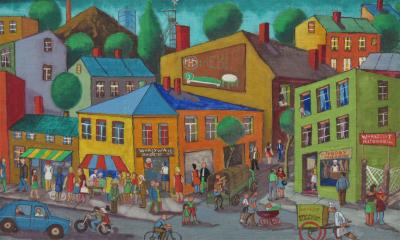
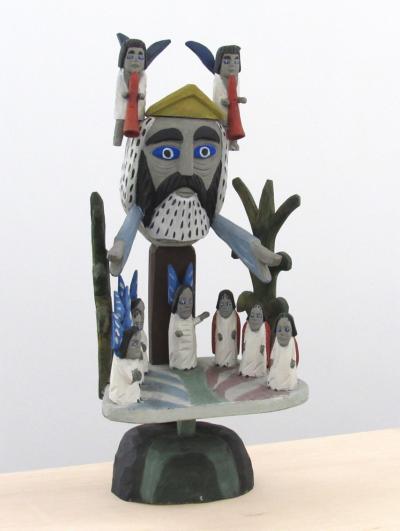


Die didaktisch mit einführenden Texttafeln begleitete Ausstellung auf drei Stockwerken der Recklinghäuser Kunsthalle wurde eingeleitet durch zahlreiche Aquarelle von Nikifor (Epifaniusz Drowniak, 1895-1968), zu dem auch der polnische Spielfilm „Mój Nikifor“ (2004, dt. Mein Nikifor) in der Ausstellung zu sehen war. Obdachlos, Analphabet und sprachlich behindert, begann er etwa 1915 zu malen, nachdem ihm ein Krankenhausarzt Farben zur Verfügung gestellt hatte. Er malte auf jedem Stück Papier, das er finden konnte, und saß täglich mehrere Stunden an der Flaniermeile des Gebirgskurorts Krynica, wo er geboren worden war, um seine Bildschöpfungen zu verkaufen. In ihnen trat er als respektabler Herr im schwarzen Anzug (Abb. 3), als Bischof (Abb. 4) oder Heiliger auf und erschuf so eine Gegenwelt zur Realität. Ausstellungen in Paris, Warschau, Amsterdam, Brüssel und Deutschland machten ihn zum bekanntesten Naiven Polens.
Bolesław und Wacław Suska, Bauern in einem Dorf in Ostpolen, begannen Anfang der 1970er-Jahre in ihrer gering bemessenen Freizeit zu schnitzen. Am Ende des Jahrzehnts konnten sie auf zahlreiche Ausstellungen im In- und Ausland zurückblicken. Bolesław begann mit religiösen Motiven wie Adam und Eva (Abb. 5) oder Heiligenfiguren und wandte sich bald der dörflichen Alltagswelt mit vollplastischen Figuren wie dem „Rabbi im Gehrock“ oder Reliefs mit Darstellungen von bäuerlichen Hochzeiten zu (Abb. 6).
Bruno Podiaski, 1919 in der Nähe von Preußisch Stargard bei Danzig (Starogard Gdański) geboren, war von Beruf Ziegelbrenner und diente während des Zweiten Weltkriegs zunächst in der polnischen und dann zwangsweise in der deutschen Armee. Vermutlich in sowjetischer Kriegsgefangenschaft erkrankte er an Tuberkulose und wurde 1949 in das Sanatorium in Kowary eingewiesen. Nach seiner Kur blieb er dort und arbeitete im Sommer als Gärtner und im Winter als Heizer. Mitte der Sechzigerjahre lernte er im Sanatorium den Maler Józef Gielniak (1932-1972) kennen, der ihm das Malen beibrachte und der später in Bukowiec an der Tuberkulose starb. Berühmt wurde Podiaski mit seinen bildlichen Visionen vom Kampf mit dem Tod vor der Kulisse des Sanatoriums (Abb. 8).
Der charakteristische Stil seiner geschnitzten Figuren machte Jan Lamecki (1895-1960), Sohn eines Landarbeiters aus Zentralpolen und selbst Hirte und Stallknecht, in den Sechzigerjahren berühmt. Die strenge Durcharbeitung seiner Holzskulpturen, die Priester und Heilige (Abb. 9) aber auch Personen des öffentlichen Lebens wie Marie Curie oder Lenin darstellen, ihr starrer Blick, aber auch die fein abgestimmte, gedämpfte Farbigkeit heben sie von zahlreichen Werken der polnischen Volkskunst ab. Gar nicht so unterschiedlich arbeitete der achtzehn Jahre jüngere Stanisław Denkiewicz (1913-1990), der mit fast zwanzig Arbeiten in der Recklinghäuser Ausstellung vertreten war. Ein ähnlich starrer Blick, statuarisch-geschlossene Körperhaltung und gelegentlich etwas buntere Farben kennzeichnen seine Figuren. Er habe, sagte Denkiewicz, wie jeder Hirte geschnitzt und für die Leute Zigaretten- und Tabakschachteln angefertigt. Als der ortsansässige Bischof seine Vögel und Tiere sah, habe er ihn ermuntert, Kruzifixe zu schnitzen. In den Sechzigerjahren kauften Galerien und Museen in ganz Europa ihm seine Werke ab (Abb. 10-12).





















































































